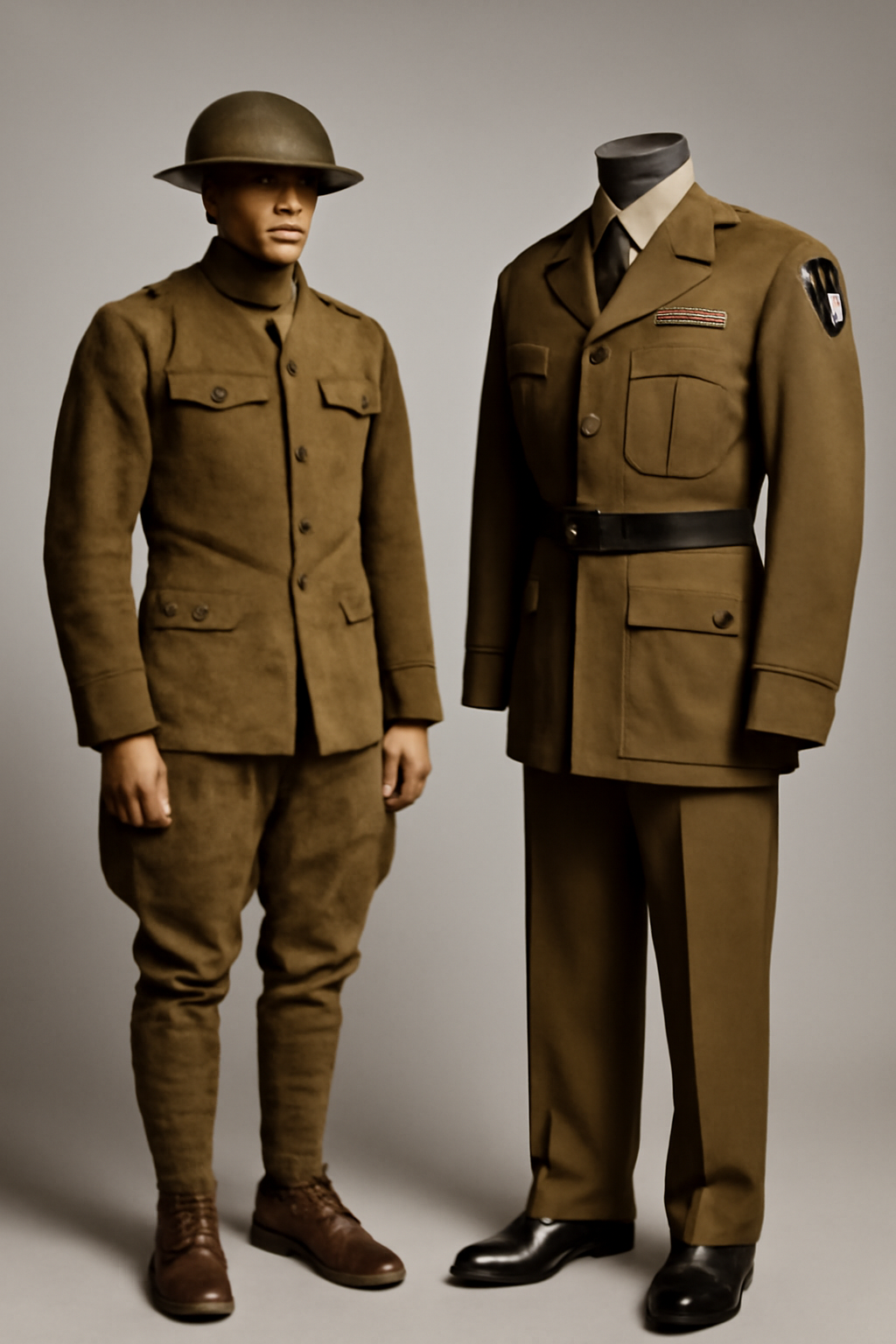
Unveiling the Legacy: A Deep Dive into WW1 American Uniforms – Understanding the History and Evolution
Published on Aug 23, 2025
Introduction: The Fascinating History Behind American Military Uniforms
Did you know that nearly 100 years ago, the look of American soldiers changed dramatically due to the impact of World War I? Uniforms, once seen as mere attire, became symbols of power, protection, and patriotism. For those passionate about military history, understanding the evolution of these uniforms—specifically the WW1 American uniform—offers a fascinating glimpse into the past. This article will explore the history, key elements, and current trends around WW1 and WWII American uniforms, from the classic 1890 US Army uniform to the iconic 101st Airborne dress uniform.
The Importance of Uniforms in WW1 and WWII: More Than Just Clothing
The Functionality of Military Uniforms
The WW1 US uniform was designed with a specific purpose: to serve the soldier during the harsh conditions of trench warfare. The materials used were practical, aiming to offer both durability and comfort. However, uniforms were more than just protective clothing. They symbolised national pride, unit cohesion, and military identity.
Evolution of the WW1 American Uniform: From the 1890s to 1917
The 1890 US Army uniform set the stage for the iconic looks that would follow. By the time World War I began, the military had transitioned into more practical, serviceable designs, but with a focus on maintaining a strong, uniform appearance. The introduction of the standard-issue M1917 uniform, modelled after the British design, showcased how the military adapted to changing warfare tactics.
Key Elements of the WW1 American Uniform: What You Need to Know
The Iconic Doughboy Outfit
One of the most recognizable elements of the WW1 American uniform was the "Doughboy" look. This included a woollen service jacket and trousers, paired with a distinctive campaign hat or helmet. The simplicity of the design reflected the harsh realities of trench warfare, where soldiers needed practical, durable attire.
Footwear and Accessories: The Unsung Heroes
Many people forget about the significance of the boots and accessories in military uniforms. For WW1, soldiers were issued sturdy leather boots designed for long marches and trenches. These boots were paired with gaiters to protect the lower legs, further showcasing how every part of the uniform had a purpose.
Trends in Collecting WW1 and WWII Uniforms
For enthusiasts of military history, collecting WW1 US uniforms or WW2 American uniforms can be a thrilling, yet challenging, hobby. While there is a growing market for vintage military attire, there are some key things to consider before diving in:
- Know Your Authenticity Markers – Look for specific details such as buttons, stitching, and tags that can help identify the era and origin of a uniform.
- Check for Proper Sizing – Many collectors overlook sizing when purchasing vintage uniforms. Ensure the fit is historically accurate, as uniform sizes have evolved.
- Beware of Reproductions – The market is flooded with replicas. Always ensure the piece is an authentic WW1 US uniform before making a purchase.
Common Pitfalls in Collecting WW1 and WWII Military Uniforms
While collecting historical military uniforms is exciting, there are several common mistakes collectors make. One such mistake is not properly verifying the provenance of a uniform. Authentication plays a major role in determining the value and significance of an item. Be sure to ask for certificates of authenticity or provenance documents when purchasing.
Actionable Tips for Restoring and Preserving Vintage Uniforms
How to Restore a WW1 Uniform
Restoring a WW1 American uniform requires patience and care. Here are a few steps to ensure your uniform maintains its value:
- Clean Carefully – Avoid using harsh chemicals. Gently spot clean the fabric with mild soap.
- Storage – Store your uniform in a cool, dry place away from direct sunlight to avoid fabric deterioration.
- Consult Experts – If you are unsure about the restoration process, it’s always best to seek professional help from experts specializing in military memorabilia.
The Legacy of WW2 Uniforms: The 101st Airborne Dress Uniform
While the WW1 American uniform was a symbol of resilience and patriotism, WW2 uniforms took on a different role, reflecting the more sophisticated needs of the American military. One of the most iconic uniforms from World War II is the 101st Airborne dress uniform, worn by the brave soldiers of the "Screaming Eagles." This uniform was more than just a uniform—it represented valour, sacrifice, and a legacy of bravery.
The evolution of military uniforms through these wars highlights how attire went from simply functional to an iconic symbol of the strength and unity of the forces.
Conclusion: Honouring the Past and Preserving the Legacy
Understanding the history behind the WW1 American uniform gives us insight into how the American military has evolved over the years. Whether you're a history enthusiast or a collector, there’s no doubt that these uniforms carry deep historical significance. By studying their design and functionality, we not only honour the soldiers who wore them but also preserve their legacy for future generations.
As a beginner in military uniform collection or simply a passionate history lover, you now have actionable steps to start exploring the world of vintage military uniforms. From identifying authentic WW1 US uniforms to caring for rare collectables, the journey is both educational and rewarding.
Call to Action: If you're passionate about history and want to dive deeper into collecting military uniforms, start your collection today and honour the heroes of the past!
